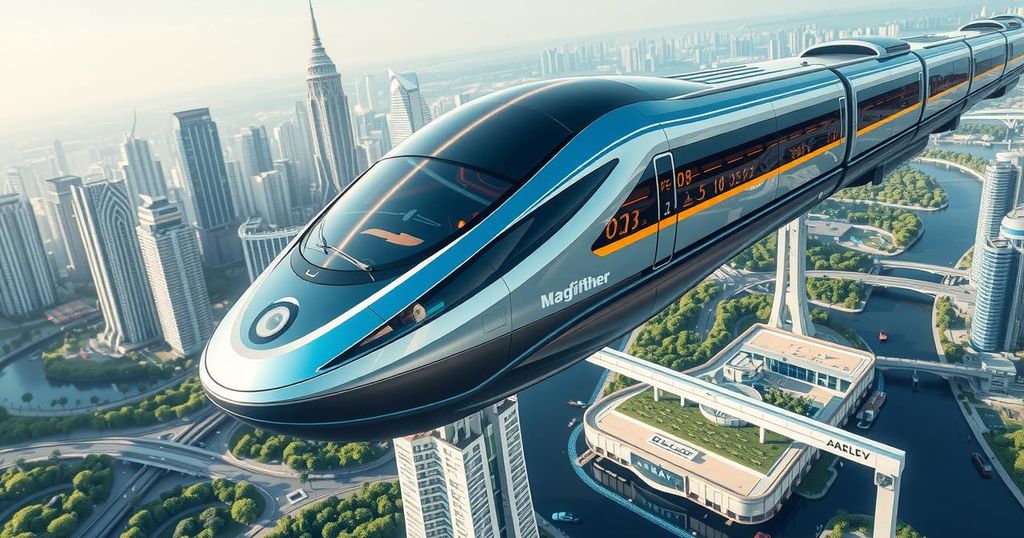China Chases 373 mph ‘Flying Train’ That Would Render HS2 Obsolete

- China is developing a 600 km/h maglev train that threatens to make Britain’s HS2 line redundant.
- The CRRC’s prototype showcased in Beijing demonstrates confidence in high-speed maglev technology.
- Unlike traditional trains, maglevs operate without contact, reducing friction and maintenance costs significantly.
- Experts believe conventional bullet trains may soon be rendered obsolete by long-range maglev services.
- Revolutionary travel times could reduce a Beijing to Shanghai journey to just two and a half hours.
- Britain’s HS2, predicted to open soon, could be overshadowed by faster maglev alternatives.
China’s Ambitious Plans for Maglev Technology
China’s ambitions to develop a 373 mph ‘flying train’ are raising eyebrows, especially in light of Britain’s HS2 project, which is yet to open. The country is pushing ahead with plans for a 600 km/h maglev train that promises to render high-speed services like HS2 redundant before they even commence. The state-owned CRRC unveiled a prototype in Beijing, demonstrating increasing confidence in the maglev technology that could redefine train travel as we know it.
Key Advantages of Maglev Over Conventional Trains
Differentiating itself from traditional rail, which tends to max out around 200 mph, maglev trains hover just above their tracks, significantly reducing friction and allowing for these extraordinary speeds. The design’s advantages also include lower maintenance costs, zero emissions from electric engines, and quieter operation due to the absence of wheels. While only a handful of maglev services currently exist, primarily serving airports, the CRRC aims to introduce ultra-high-speed services within five years, competing directly with Britain’s projected HS2.
Profound Implications for Future Travel
Experts are voiced concerns that HS2, initially slated to run at 225 mph, may not keep up with emerging technologies. According to Prof. Johannes Kluehspies, president of the International Maglev Board, a long-range maglev service could render conventional trains obsolete altogether. Journey times on the new CRRC ‘flying train’ could transform travel; for instance, a trip from Beijing to Shanghai might shrink from four and a half hours to just two and a half hours. In Europe, the implications are staggering, enabling faster connections between major cities.
As China forges ahead with its groundbreaking maglev technology, HS2 faces a stark challenge of obsolescence before it even launches. With speed, efficiency, and environmental benefits at the forefront, maglev trains are likely to redefine the transport landscape. The future of rail travel may very well hinge on how quickly these advancements come to fruition and whether existing projects can adapt to the competition.





